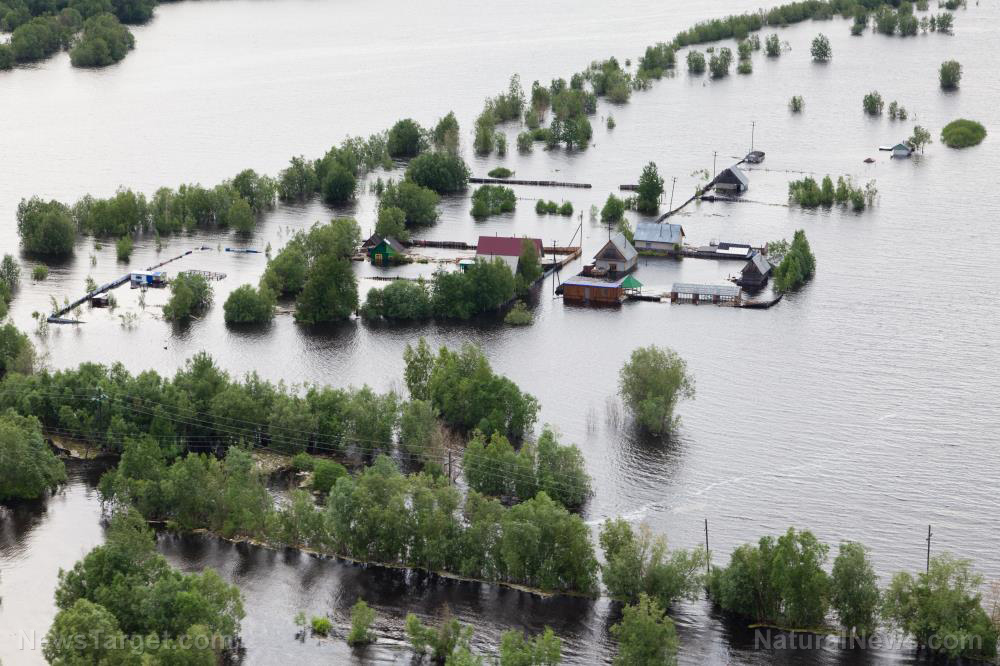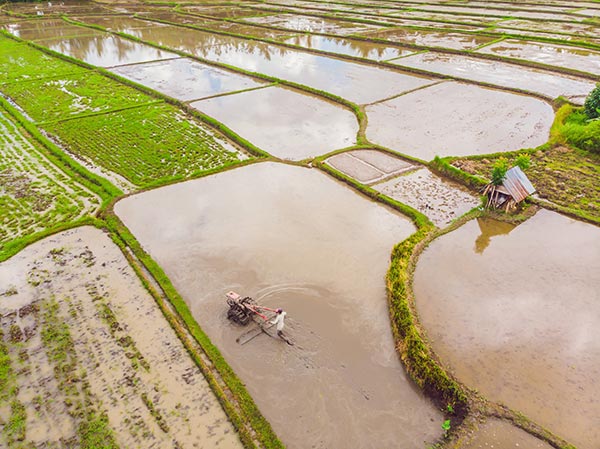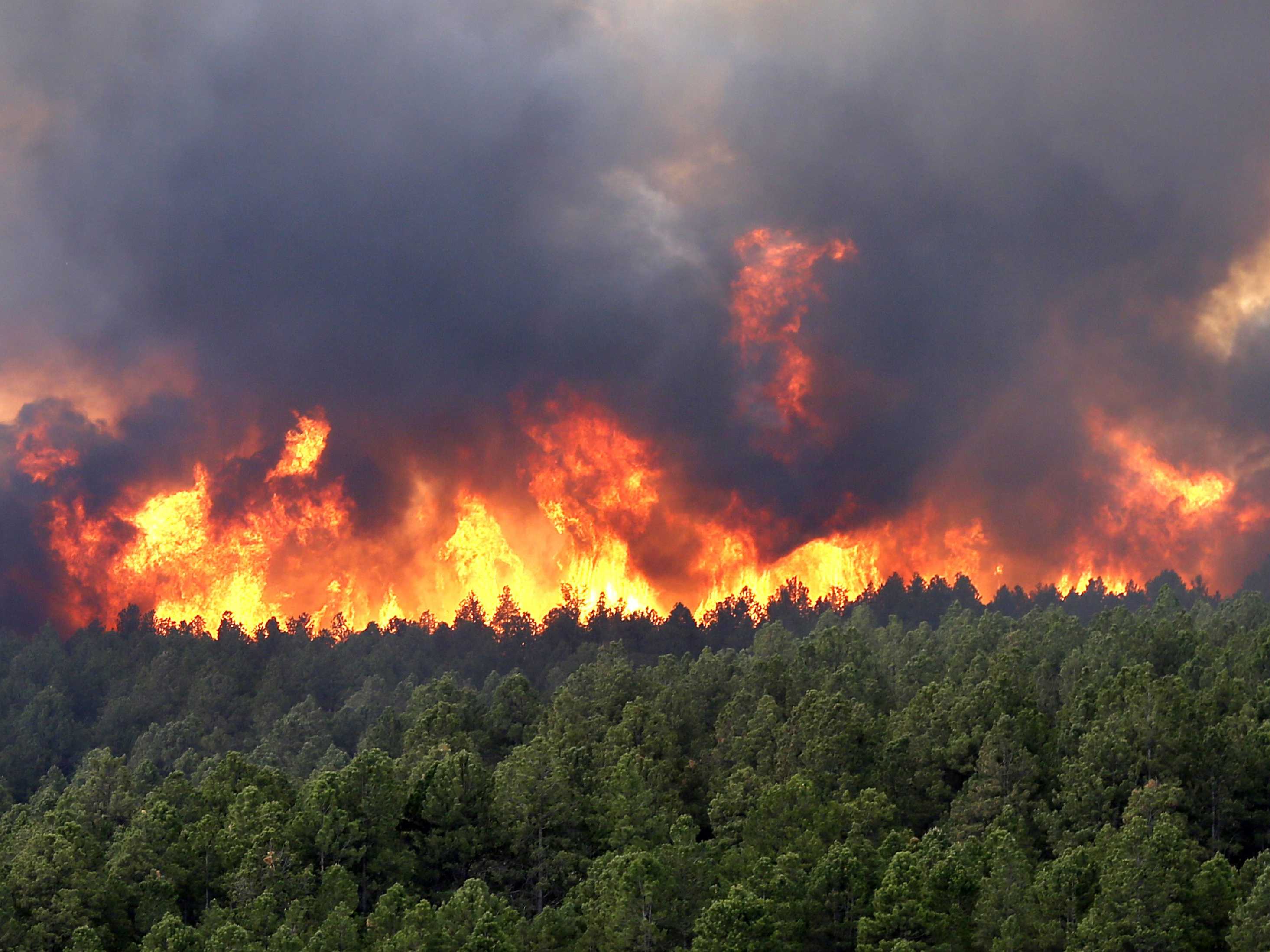China experiences over 20 “historical” large-scale floods in 2020
10/06/2020 / By Ramon Tomey

China has experienced 21 large-scale floods so far this year — 1.6 times more than previous years. This number hit a previous historical flooding record since 1998, with most occurring in the six main Chinese river basins – including the Yangtze and Yellow River.
A statement released by China’s Ministry of Water Resources on Sept. 22 mentioned that 833 rivers in China have gone above flood warning levels, 80 percent more than the 1998 record. Among that total, 267 rivers went over the safety level and 77 reached record highs.
Meanwhile, the national average rainfall in China for 2020 reached 616 mm — the second-highest since 1961. This was 13 percent more than the 2019 national average.
Water levels in some major northeast China rivers are still over the warning limit, and emergency response to floods in the country still remains at level-IV. Two working groups from the Ministry of Water Resources are still in the Heilongjiang province to guide work on local flood defenses.
Despite this, the ministry and other authorities vowed to continue flood control efforts as the country has now entered the late-stage flood season. (Related: China floods reach new high as officials issue grim warnings.)
China has been experiencing flooding in the past few months
Three days of moderate to heavy rainfall is still expected in some parts of China’s western and southern areas. Some cities in the provinces of Guizhou, Yunnan and Sichuan, and Guangxi in the south, will experience torrential rain.
This weather projection follows an earlier report in September by The Epoch Times: Three typhoons hit the Jilin and Heilongjiang provinces in the northeast, causing heavy rain and exacerbating floods. The resulting flood inundated a number of farms and destroyed crops that were ready for harvesting. Heilongjiang province is one of the country’s main producers of corn, Japonica rice and soybean. Its soybean yield comprises almost half of Chinese production, while Japonica rice from the province makes up 40 percent of Chinese production.
A month earlier, the Epoch Times reported that typhoons also worsened flooding in the provinces of Sichuan, Gansu and the megacity of Chongqing. Chinese state media also reported that floodwater covered the toes of the 71-meter tall Leshan Giant Buddha statue in Sichuan.
Even the Three Gorges Dam proved insufficient in addressing China’s flooding problem
The Beijing built the Three Gorges Dam at the upper reaches of the Yangtze River as a way to control the yearly flooding, dubbed as “China’s sorrow” due to the number of lives and property lost. The recent flooding, however, questioned the dam’s role in addressing the problem, Reuters reported.
Chinese vice-minister of water resources Ye Jianchin said in July that 2.9 billion cubic meters of floodwater has been stored at the Three Gorges Dam. However, geologist Fan Xiao countered the claim and said the dam’s storage capacity only amounted to “less than nine percent of average flood water.” Fan added that the dam was “powerless” to address flooding caused by heavy rains in the Yangtze’s middle and lower reaches.
The geologist’s comments are not the only concerns about the Three Gorges Dam. Satellite images have shown that the dam is showing signs of damage — specifically, part of its frame is buckling. The Chinese government dismissed these claims.
In August, U.S.-based think tank Heritage Foundation warned about the dangers that lie ahead in case the dam collapses. The resulting deluge of water would claim millions of lives, inundate cities and farms, and worsen China’s pre-existing coronavirus problem.
If the Chinese government continues to turn a blind eye at the “displacement, seepage and deformation” in the structure of the Three Gorges Dam, it will literally be a matter of time before the dam finally gives way.
Sources include:
Tagged Under: China, Chinese government, Collapse, Flooding, floods, natural disasters, rivers, SHTF, storm, Three Gorges Dam
RECENT NEWS & ARTICLES
COPYRIGHT © 2017 DISASTER NEWS




















